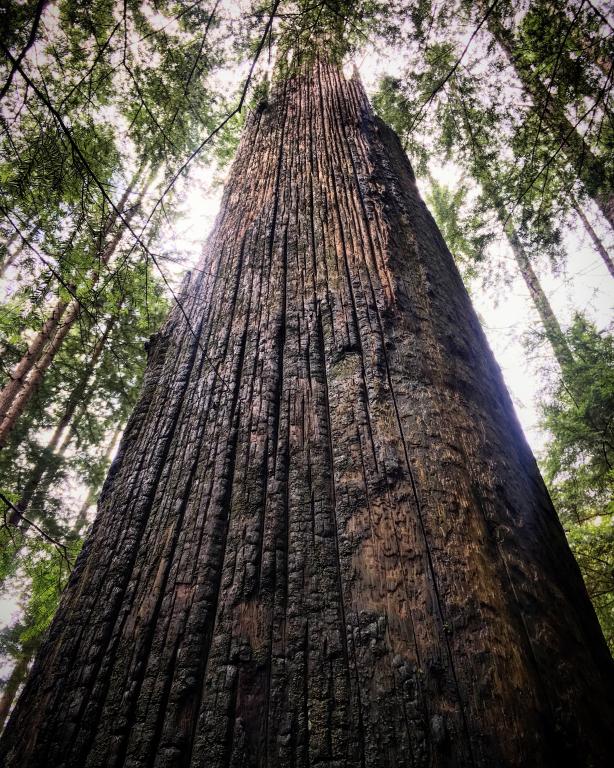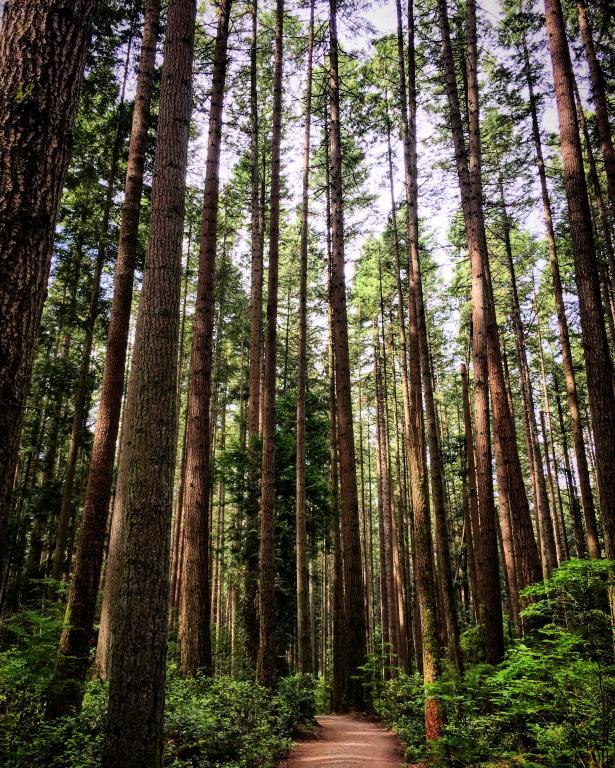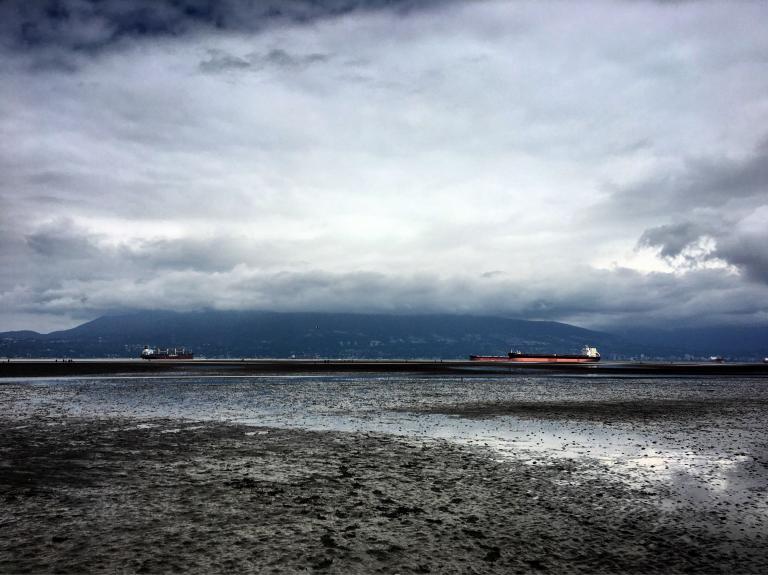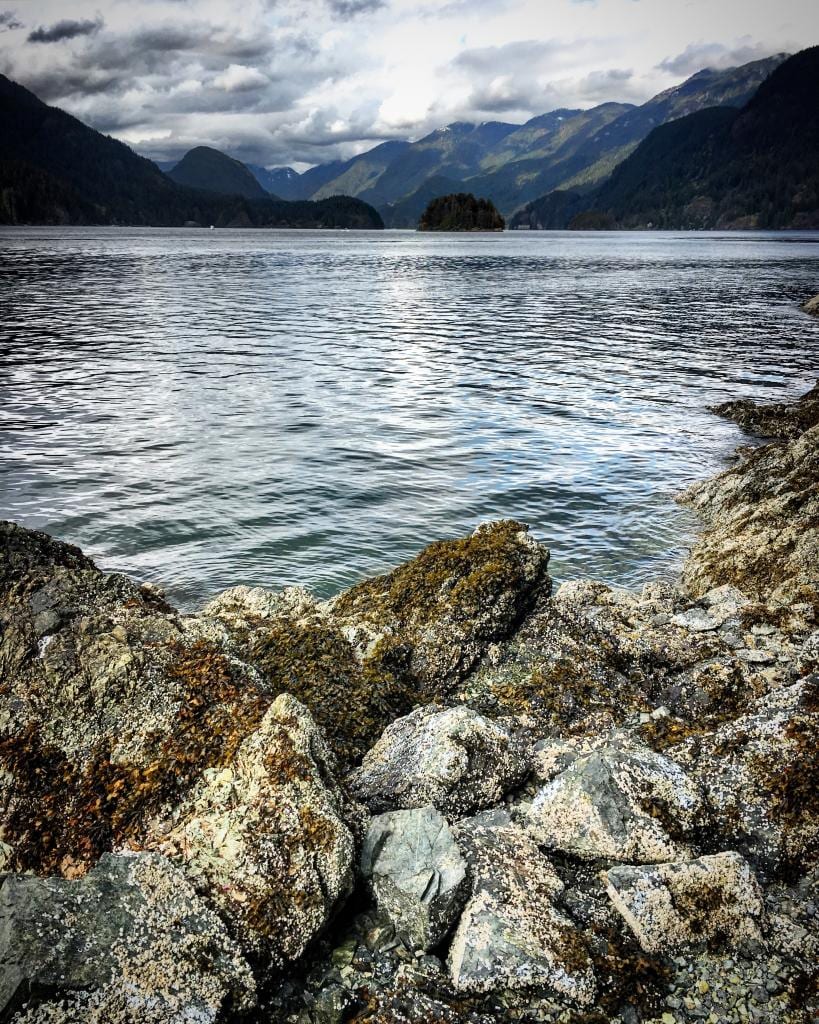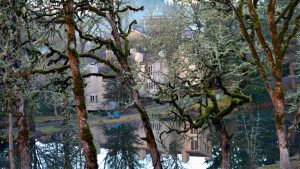
[Seminar Presentation delivered at the Institute for Resources, Environment and Sustainability (IRES) at the University of British Columbia November 11, 2016. It summarizes by PhD Dissertation at this point.]
Introduction
At 4:13 AM I stumble in the pale darkness to my choir stall. When I finally look up through the west facing window of the Abbey Church, the luminous full moon is setting through a light haze. We begin to chant the early morning Divine Office of Vigils, a ritual that unfolds day after day, month after month, year after year in contemplative monasteries all over the world.
This 2014 retreat, inspired the questions that would become my PhD dissertation research. I wanted to know: How has the monastic tradition contributed to the management of monastery landscapes? What about environmental discourse? What might we learn from the monastic sense of place in an era of ecological displacement?
Monasticism in the Christian West began in Egypt with Saint Anthony, who fled to the desert to live a life of solitude and strict asceticism. The silence and nakedness of the desert landscape was an icon for the silence and simplicity sought within. As Saint Jerome wrote, “The desert loves to strip bare.” The landscape was not simply a metaphor, but a gateway beyond metaphors; it was apophatic in monastic parlance, beyond the image.
While hermits feel called to live in solitude, cenobites live communally, under the obedience of a Rule and a Superior. This can be done in cities, but more often, contemplative monasteries of men or women are found in quiet, remote and beautiful places.
As a researcher, and a convert to Catholicism, I became something of a contemplative ethnographer in four such men’s monastic communities located in the American West, for about 12 days or so at a time; chanting, eating, working and praying with the monks. Learning the contours and rhythm of each community with my own, out of place, body. What time to wake, when to be in my choir stall, when to make the sign of the cross, when to stand, sit or bow, where to line up for meals.
I conducted 50 interviews, some seated and some walking. For those of you who have done interviews, you know that interviewing is itself a kind of contemplative practice. One must focus on what the subject is saying, while consistently bringing oneself back to the present moment from distractions.
In writing the chapters of my dissertation, my task is now to interpret the meaning of the words I have recorded. But I am also paying attention to the spaces between the words of the monks and my own. On December 10, 2015, after a walking interview looking over the Big Sur Coast, I recorded this in my journal:
“What is left unsaid, what they cannot say much about, except in affirmation, are the small things—the walk from cell to chapel, the stars, and the ocean—because the words are not there. These are the silent, contemplative aspects of embodied experience. There were plenty of silences in our interview where we were both simply walking, wondering perhaps what the other was thinking. Feeling pressure to speak, to say something useful for the recorder. But underlying it was the understanding that what we experience is not always shapeable into words. That what the sunset reminds us of is a thin veneer over the profound solitude of what lies beneath it….We were creating a place, a reality together. The interview was not predicated on getting to the bottom of what his world was really like. But what the world was like between us.”
Spiritual Ecology
This is what I mean by Spiritual Ecology, or Contemplative Ethnography, describing the relationship between inner and outer landscapes within contemporary discussions in Religious and Environmental Studies.
But what does this matter, in an era of ecological catastrophe? The Anthropocene is dawning and industrial humans are at a crossroads. The contours of Nature and Wilderness are being warped from within and without. Our role in the biosphere is being vigorously debated. We need policy changes, mass movements and technological innovation. But environmental ethicists argue that we also need a revolution of the human heart.
In diagnosing our modern malaise, Lynn White Jr. a historian of medieval technology, laid the blame for the ecological crisis not on mushrooming population or government oversite, but on the fundamental axioms of Judeo-Christian civilization. Since that time, scholars and activists have sought to retrieve traditions, scriptural passages, and practices from the world’s major religions that connect spirituality with the environment. As a result, some are pointing to a ‘Greening of Christianity,’ while others suggest that mainline churches have yet to make any substantial shifts toward pro-environmental behaviors.
It is within this line of inquiry that monasticism has garnered increased attention as a case study in the relationship between belief, sustainability and sense of place.
Land Management as Liturgy
My first research stop was to New Camaldoli Hermitage in Big Sur, California. The community was established in 1958 by monks from Italy. They emphasize the hermit tradition and spend more time in silence than other communities. The Hermitage is located on 880 acres in the Ventana Wilderness of the Santa Lucia Mountains. Coastal Live Oak dominate the erosive, fire adapted chaparral ecology, and the narrow canyons shelter the southernmost reaches of Coastal Redwood. The area is also habitat for a recovering colony of California condors. The monks make their living by hosting retreatants and run a small fruitcake and granola business.
While it is clear that a quiet, natural setting is conducive to the monastic life of prayer, in this chapter of my dissertation, I argue that the management of these landscapes is liturgical, in the sense that management values integrate the land into Benedictine spiritual practice. The land not only populates prayer life through silence, solitude and beauty, but also affirms monastic identity and history.
In the Rule of Saint Benedict it says, “Let the monk regard all the utensils of the monastery and its whole property as if they were the sacred vessels of the altar.” Guided by this ethic, the Benedictine motto Ora et Labora, or, Work and Prayer has come to be synonymous with the Order.
In terms of history, New Camaldoli recalls the Mother House in Italy, and the monks are proud to belong to an Order with a history of forest management going back centuries. Reflecting on his identity as a monk of New Camaldoli, one monk said, “I’m here to help maintain this property, and this property helps to maintain me in my spiritual journey.”
Another monk, proud of the monastic heritage of living on the land, recounted: “We actually go backwards and make ourselves slaves to the land and to the place and find freedom there, instead of working the land to be free of it, to get our independence. We become slaves of the land. I love that. And even our vow of Stability, I’m going to stay here. I’m not going to go anywhere else. There’s a certain kind of indentured-ness about that, but it’s freely chosen in a Wendell Berry kind of way.”
In my interviews, the monastic values of Silence, Solitude and Beauty were consistently described as being upheld and populated by the land. The eternal horizon of the Pacific Ocean, the enveloping coastal fog, and the precarity of fire, earthquake and drought were not just a setting for a way of life, but elements which participated in the spiritual practices of contemplative life. To use a monastic term, the land incarnates, gives flesh, to their prayer life. That is part of what I mean when I say that land management is liturgical.
The Hermitage has gone to great lengths to protect these values: They prohibit tree cutting, hunting, fishing or the spraying of chemicals on the property. They maintain fire roads and walking paths. In the 1990s, they lobbied against the impending sale of an adjacent property, which was eventually turned into a State Park. The monastery acts as a kind of sanctuary to the world, much as a protected area does.
The Wilderness as Garden
The monastic’s whole life is focused on seeking union with God, an experience beyond words, and land plays an important role in this central purpose. However, as monastic communities have opened up since Vatican II, and decreasing vocations has required additional help from ‘seculars’ (as they refer to us) environmental discourse is playing an increasingly important role in each of the communities’ approach to land. In this chapter, I describe that influence.
The second monastery I visited was New Clairvaux Abbey, which is located on 600 acres of prime farmland in California’s Central Valley. It is surrounded by orchards, but maintains a lush cloister garden that is shared with flocks of turkey vultures and wild turkeys. This Trappist monastery has grown prunes and walnuts for a living since 1955.
New Clairvaux’s orchards are not organic, but managed by industry standards using conventional methods of irrigation and pest management. The monks are concerned about the impact of chemicals on monks, wildlife and guests, but have as of yet been unwilling to risk the financial losses associated with converting to organic.
These monks were less comfortable with the language of ecological sustainability, and spoke in terms of stewardship or agrarianism which frames management as cooperation between humans and nature. One monk related:
“Learning to care for living things, cooperating with them to make them fruitful, its cooperation. With our help we can make them more fruitful than they could be, for Gods glory. Now I mean obviously that’s not quite the same thing as the natural beauty of a wild forest but it’s the beauty of the cultivated orchard and that has a place too. Cooperation between man and nature. I see that as one of the fruits of this particular way of life, its real cooperation.”
In this chapter, I take a critical look at each community in turn and describe the influence of environmental discourses at work within contemporary monastic communities. Each community faces increasing management challenges in the west such as invasive species, drought, erosion, biodiversity loss, development, and each in turn will need to better blend monastic values with contemporary ecological science to cope and adapt.
The Book of Creation
Our Lady of Guadalupe Abbey was founded in 1955, when, Trappist monks from a failed New Mexico foundation made their way to the foothills of the Coastal Range in Western Oregon. When they arrived, the previous owner had clear cut the property and run. They replanted, and today the 1,300 acre property is covered by Douglas fir forests, most planted by the monks. Though they began as grain and sheep farmers, today the monastery makes its living through a wine storage warehouse, a bookbindery, a fruitcake business, and a forestry operation.
In this chapter, I look at the monastic experience and sense of place. In one school of thought, perception of landscape is a semiotic problem. We socially construct meaning and project it onto otherwise meaningless terrain. Anthropologist Tim Ingold counters that:
“Through living in it, the landscape becomes a part of us, just as we become a part of it…Human beings do not, in their movements, inscribe their life histories upon the surface of nature as do writers upon the page; rather, these histories are woven, along with the life-cycles of plants and animals, into the texture of the surface itself.”
As I observed, for monastics it is clearly both/and. They live in a world steeped in religious symbols, but also embodied spiritual practice. For example, the monks chant the Psalms seven times a day, which are filled with land-based poetry. As one monk put it:
“Any monk who has spent his life chanting the Divine Office cannot have any experience and not have it reflect, or give utterance in the Psalmody. The psalmody is a great template to place on the world for understanding it, and its language becomes your own.”
In this mode, the land becomes rich with symbol: the dormancy of fall speaks to dying, the fresh growth of spring of resurrection, a tree growing out of a rock teaches perseverance, a distant train whistle reminds one to pray, a little flower recalls Saint Therese of Lisieux, a swaying Douglas fir tree points to the wood of the cross, a gash in a tree symbolizes Christ’s wounds. In each case, the elements of the land act as symbol within a system of religious symbology.
And yet, there was also a sacramental aspect to the land. Theologically speaking, God’s presence in the land is a real presence that does not just point to, but participates in God. This gives an embodied or in their words, incarnational, quality to their experience of the land.
In addition, the monks spoke of their experiences in terms of flashes of insight, or moments of clarity that transcended specific locations or symbolic meaning.
The monks, especially at Guadalupe, have sunk deep roots into the land, and strive to be “Lovers of the place” as the Trappist adage goes. When I asked one monk if this meant that the landscape was sacred, he paused and said, “I would say that it is loved.”
The Thing Itself
For my last stop, I headed to the high pinyon-juniper deserts of New Mexico. At the end of a 13 mile muddy dirt road, surrounded by the Chama River Wilderness, an adobe chapel stands in humble relief against steep painted cliffs. Founded in 1964, the monastery is the fastest growing in the Order, with over 40 monks in various stages of formation. The monks primarily live on their bookstore and hospitality, but also grow commercial hops.
In this chapter, I look at a curious finding. After interviewing several monks, a pattern emerged. After describing some moving symbolic meaning behind a flower or tree, I would ask what it was called. Or, as we walked and a bird would fly by, I would ask what it was. As we sat on the banks of the Chama River, one monk described the spiritual significance of the changes of the seasons, pointing to a nearby shrub that was just beginning to leaf out in vibrant green, describing what it would look like next. So I asked, “What plant is that?” “I have no idea” he replied. There were several notable exceptions, but the monks didn’t seem to care all that much about names. During one walking interview, tired of me asking, one monk decided to make them up: “Well that there is the “Fred Oak;” and, this one here is the “Lusitania trumpet.”
So what’s in a name? On the one hand, I expected environmental literacy to include the words and names in the Book of Creation. But on the other, monastic spirituality seeks to move beyond names, metaphor
s and images toward a raw experience of the Divine.
As I walked along a narrow path with one monk at Christ in the Desert, a mix of snow and rain fell onto the parched red dirt. Without any kind of prompt on my part, he said, “The one thing I have learned is that the truth is in the thing itself and not in thinking about it.” “Ok,” I said, frustrated, “but isn’t it important to know what things are called?” He replied, “It can all be there in your knowledge bank, but it’s letting go of that. There has to be a point where we’re just in silence before God, and in silence before the beauty that he’s created, without trying to put things on it.”
Rather than demonstrating, as I expected, a kind of traditional ecological knowledge, or even a more general place-based ecological literacy, contemporary monastics, have developed a kind of theo-ecological knowledge that recognizes every element, creature, task, or moment of ineffable grace on the landscape, as an invitation to be present to the holiness that patiently awaits under the surface.



